Can You Freeze Tomatoes?

Whether you’ve grown an abundance of tomatoes in your garden or have simply purchased too many at the grocery store, it’s common to wonder: “Can you freeze tomatoes?”
Tomatoes truly are a kitchen staple, making key appearances in many different cuisines and serving as a crucial ingredient in an array of dishes.
If you’ve ever been faced with a surplus of tomatoes, you might have ended up throwing away the ripest of the bunch without investigating whether or not they could be frozen to be used later.
Our guide to freezing tomatoes will teach you the best methods for freezing different varieties of tomatoes and different tomato-based products so that you’ll never have to throw away a good tomato again.
Jump to Section
Can Tomatoes Be Frozen?
Tomatoes are typically at their freshest from May through October and in-season tomatoes are a delicious addition to any meal. The good news about ripe summer tomatoes is that you can keep them fresher for longer by freezing them.
Tomatoes can be frozen in different forms, including chopped or puréed, to be used in various ways when defrosted. One thing to note is that tomatoes have a high water content, which will affect how they freeze and their texture once they are thawed.
The texture of a thawed tomato is never quite the same as a fresh tomato, so it’s good to keep this in mind and use your frozen tomatoes in recipes and dishes where the difference in texture will not affect the outcome of the dish, such as stews and pasta sauces.
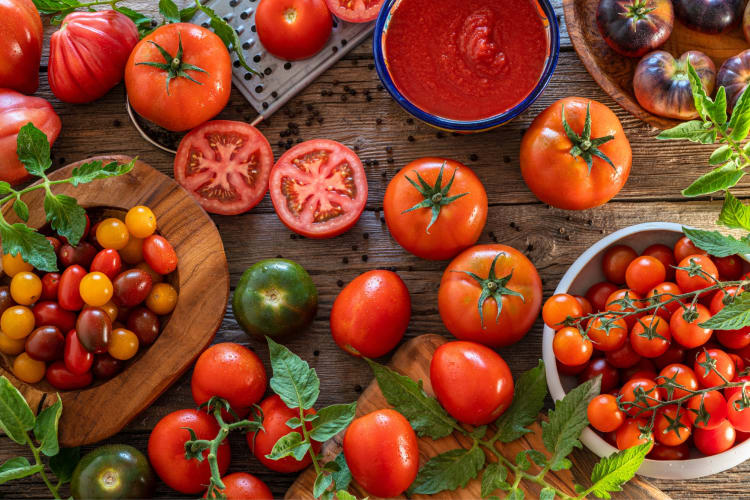
Can You Freeze Whole Tomatoes?
The most straightforward way to freeze a fresh tomato is to freeze it whole. Simply wash and dry the tomato and then place it in the freezer until frozen solid. You can then transfer the tomatoes to a freezer-safe bag or container.
It’s best not to leave the tomatoes on a baking sheet in the freezer for too long as this can cause freezer burn. As soon as your tomatoes are frozen solid, transfer them to the containers you plan to store them in.
Freezing tomatoes whole is certainly an easy method, but it is not the best plan if you are trying to save space in your freezer. Whole tomatoes take up quite a bit of room, so try freezing them in other forms to save space.
You will also have to wait for them to defrost before using them, whereas chopped or blended tomatoes can be added straight to recipes and defrosted on the stove or in the oven.
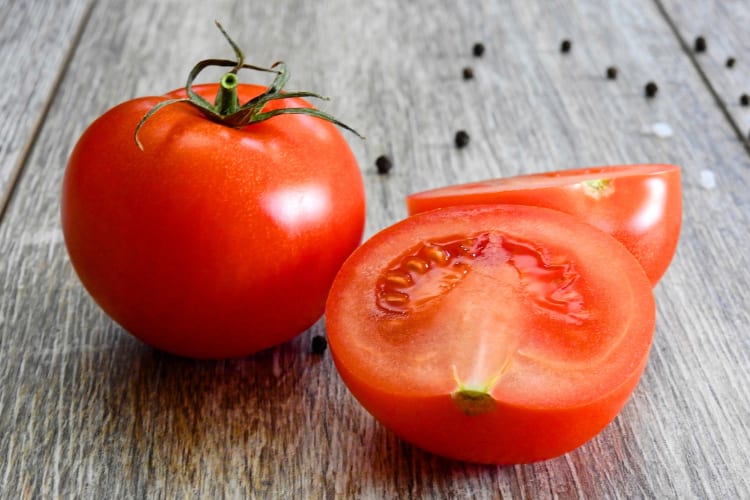
Can You Freeze Cherry Tomatoes?
Now that we've discussed freezing larger tomatoes, can you freeze cherry tomatoes? Yes, cherry tomatoes can also be frozen to maintain freshness.
As with whole tomatoes, they can be frozen whole and stored in bags or you can slice them first and pre-portion them into the amounts needed for different recipes.
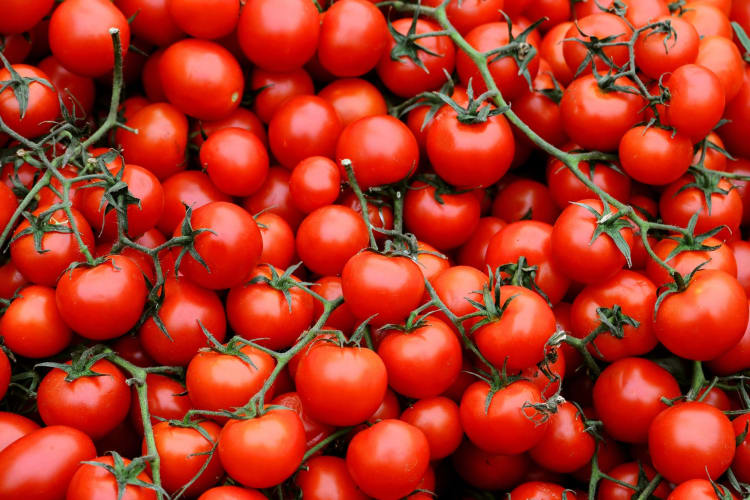
Can You Freeze Green Tomatoes?
Just like their red, riper cousins, you can freeze green tomatoes (and similar tomatillos). If you’re planning to fry the tomatoes, freeze them in slices to make your preparation easier. Simply add a slice of wax paper in between each slice for easy separation when you thaw them.
If you’re using them in other dishes, they can be frozen, chopped or even whole. If freezing canned tomatillos or green tomatoes, they can just be transferred from the tin to a freezer-safe bag or container and then frozen.
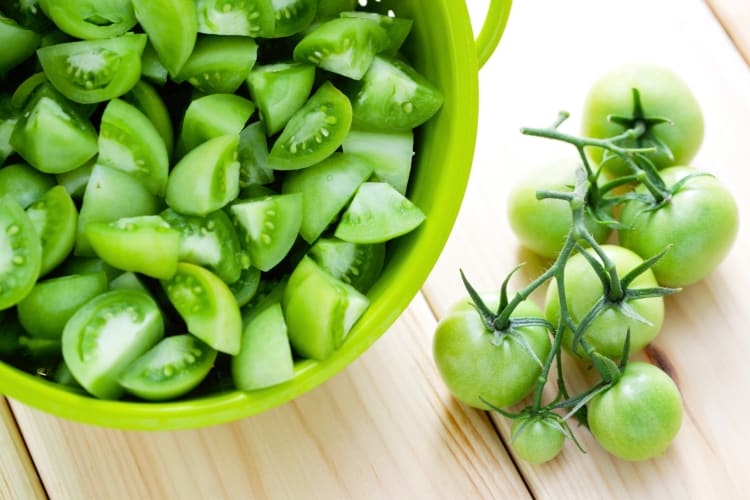
Can You Freeze Chopped Tomatoes?
It’s simple to freeze whole tomatoes, but can you freeze diced tomatoes? Yes, you can! In fact, chopping whole tomatoes before freezing is generally the best practice to save freezer space and ensure they are ready for use in your recipes without defrosting. Even if you need to defrost the tomatoes, they will thaw much quicker when frozen chopped instead of whole.
To freeze chopped tomatoes, dice the tomatoes to the desired size if not already chopped, then store them in freezer-safe containers or bags. Once ready to use, just add them to your dish on the stove, whether that’s a pasta sauce, stew or zesty tomato gravy.

Can You Freeze Canned Tomatoes?
The vast majority of people will have canned tomatoes in their kitchen due to their long shelf life and ease of use in recipes. But sometimes you don’t need to use the entire can for one dish, leading many to wonder if you can freeze canned tomatoes.
Instead of throwing away the leftovers, you can freeze what remains for later use. Be sure to transfer it out of the metal can and into a freezer-safe bag or container before freezing. When ready to use, defrost the canned tomatoes in the refrigerator and then add to your recipe.

Can You Freeze Tomato Sauce?
Conveniently, you can freeze homemade or store-bought tomato sauce for use at a later date. If you made the sauce on the stove, make sure it reaches room temperature before freezing. You can freeze tomato sauce in a freezer-safe container or bags, with freezer bags being a good option if you’re short on freezer space.
To save space, lay the freezer bag of tomato sauce out flat on a cookie sheet or on the bottom of your freezer. Then you’ll have stackable bags of sauce to store tidily in the freezer until you need them.
Due to its similarity in consistency to tomato sauce, you can also freeze tomato soup. If the soup has dairy, such as cream, ensure it is defrosted in the refrigerator instead of at room temperature to avoid curdling.
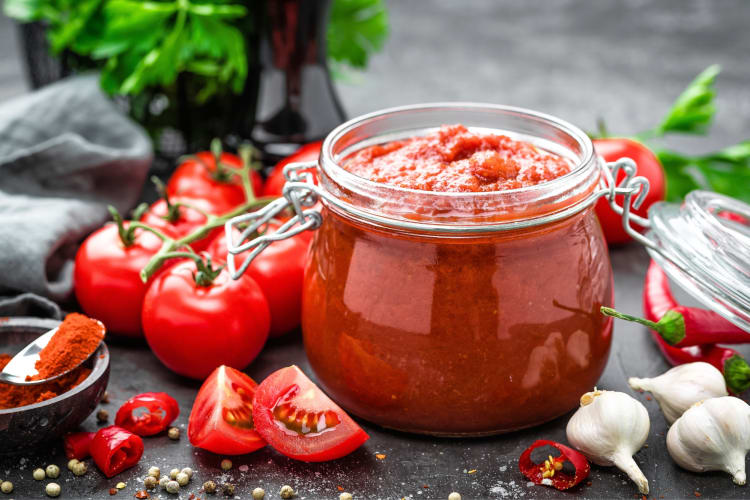
Can You Freeze Tomato Paste?
One last tomato-based ingredient you may be curious about freezing is tomato paste. As with many other tomato products, you can freeze tomato paste. It can be helpful to pre-portion the amount of tomato paste you’ll need for your recipes.
Try freezing it in a silicone ice cube tray before transferring it to its final freezer container. Then, you’ll have pre-portioned cubes of tomato paste ready to use for whatever recipe needs a zesty tomato hit.

How To Freeze Tomatoes
As with most foods that can be frozen, tomatoes freeze best when they are clean, dry and in the form that will be most useful to you. As mentioned, when freezing fresh tomatoes, it’s best to chop them before transferring them to freezer-safe bags or containers for freezing. However, you can freeze whole tomatoes if needed.
Sauces and canned tomatoes can be transferred directly to freezer-safe bags or containers, with it being best to portion them before freezing if you have more to freeze than you would use in one recipe. Tomato pastes can be portioned into ice cube trays and flash frozen before being placed in bags or containers for storage in the freezer.
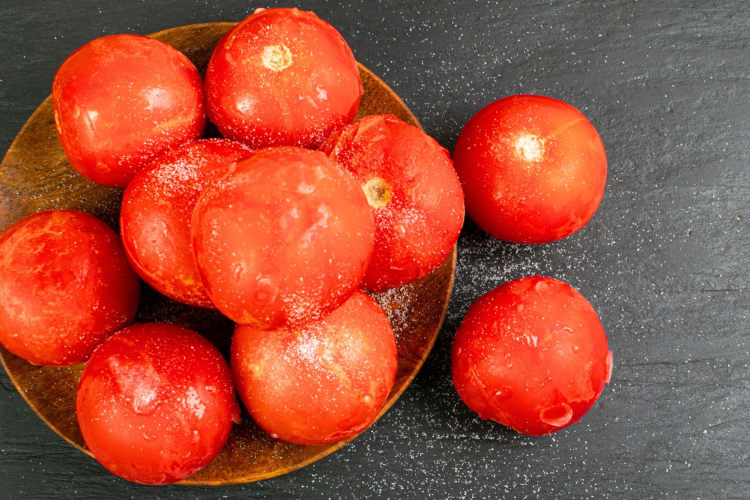
How To Freeze Fresh Tomatoes
To freeze fresh whole tomatoes, simply wash, dry and place them in the freezer on a freezer-safe tray, dish or cookie sheet. Once frozen solid, transfer the tomatoes to the container in which you plan to store them.
You can also freeze whole tomatoes that have been peeled. To do this, wash the tomatoes and peel them before freezing. To peel the tomatoes, boil them in water for a few minutes to soften the skin before peeling and freezing. You can also chop fresh tomatoes, with or without the skin, and then transfer them to bags or containers for freezing.

How To Freeze Cherry Tomatoes
The steps for freezing cherry tomatoes are similar to freezing larger tomatoes. Ensure the cherry tomatoes have been washed and are dry before freezing. Since these small tomatoes can be quite bulky in large quantities, it might be best to slice them in half or quarters before adding them to freezer-safe bags or containers.

How To Freeze Tomato Sauce
Freezing tomato sauce is as easy as adding it to a freezer-safe bag or container and placing it in the freezer, remembering to let it reach room temperature if it has been heated.
One key thing to remember when freezing tomato sauce is that there is a high water content in tomatoes. For this reason, it’s best to use a straight-sided jar and leave some room at the top as the water content can cause the sauce to expand.
Another important thing to note is that you shouldn’t freeze tomato sauce in a jar from the store, especially if it is made of glass. Instead, add the sauce to a freezer-safe container or bag for freezing.

How To Freeze Tomato Paste
Tomato paste is quite easy to freeze as well. As discussed, one optimal method is portioning the paste into an ice cube tray and flash freezing. Once the paste is frozen all the way through, it can be added to a freezer-safe bag or container and you then have conveniently portioned tomato paste ready for use.
Like with tomato sauce, the tomato paste should also be stored in a straight-sided jar with room to expand once it freezes. You could also freeze tomato paste by putting it straight into a container instead of portioning. However, you will then have to defrost the full amount for use, which could be too much tomato paste for individual recipes.

How To Freeze Tomatoes Without Blanching
Blanching is the process of briefly cooking vegetables in boiling water and then cooling them off in ice water to quickly stop the cooking process. This keeps many types of vegetables fresh and crisp when they come out of the freezer. While you can certainly blanche tomatoes before freezing them, it isn’t entirely necessary.
Due to them technically being a fruit, blanching tomatoes doesn’t have the same effect as with vegetables like green beans or broccoli, where blanching before freezing drastically improves the flavor and texture of the defrosted vegetable.
Tomatoes that have been frozen will have a slightly different texture than fresh tomatoes, regardless of whether or not they have been blanched before freezing. So if you’re short on time, go ahead and add the tomatoes straight to the freezer.
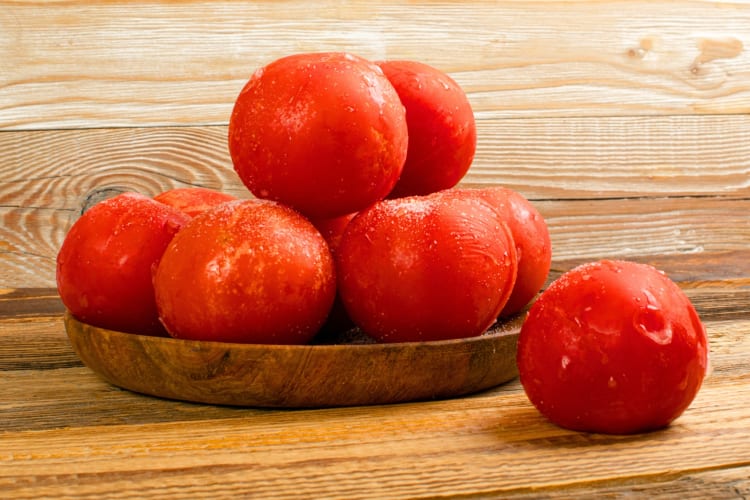
How Long Can You Freeze Tomatoes For?
Most of the tomato products you freeze, from raw tomatoes to tomato pastes and sauces, can be kept in your freezer for eight to 12 months. It is always important to write the freeze date on your freezer containers so that you can check for freshness, and you should never eat frozen foods that have signs of freezer burn, rot or other problems.
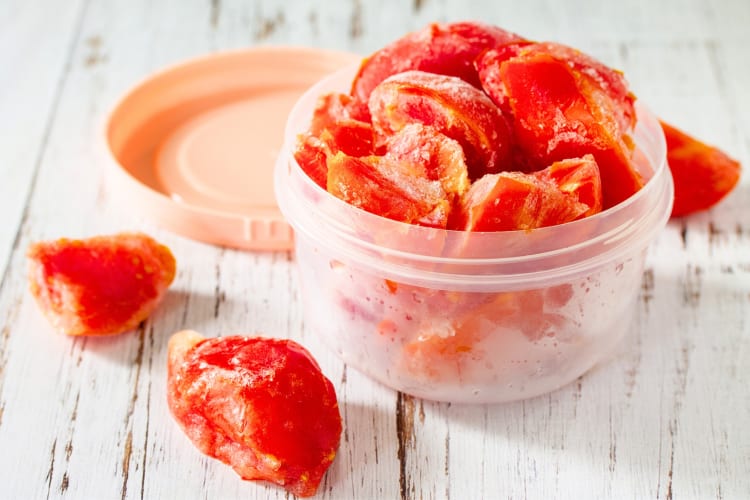
How To Cook With Frozen Tomatoes
Now that you’ve safely frozen all of your tomatoes, you might be wondering what to do with frozen tomatoes. Frozen tomatoes can be used in an array of dishes, from pasta sauces and soups to shakshouka or stews. Due to the texture changes in tomatoes during freezing, they generally won’t be able to be used in dishes like tomato salad, where fresh, crisp tomatoes make the dish shine.
When cooking with frozen tomatoes, you can defrost them first or add them straight to the dish if cooking it on the stove or even in the oven. One thing to note is that tomatoes contain a lot of water and you will have to wait until frozen to see how much water they release. Therefore, if your recipe doesn’t need much liquid, you may want to thaw the tomatoes before use and drain the excess liquid or pat it off with a paper towel.
If you add them directly to a dish, such as a stew or spicy marinara sauce, use a little less liquid (like stock or wine) at first and see how much liquid comes out of the tomatoes when fully thawed before adding any extra. If your dish has a bit too much liquid from the tomatoes defrosting, you can always add some flour or cornstarch that has been made into a paste with water to thicken the liquid without adding lumps.
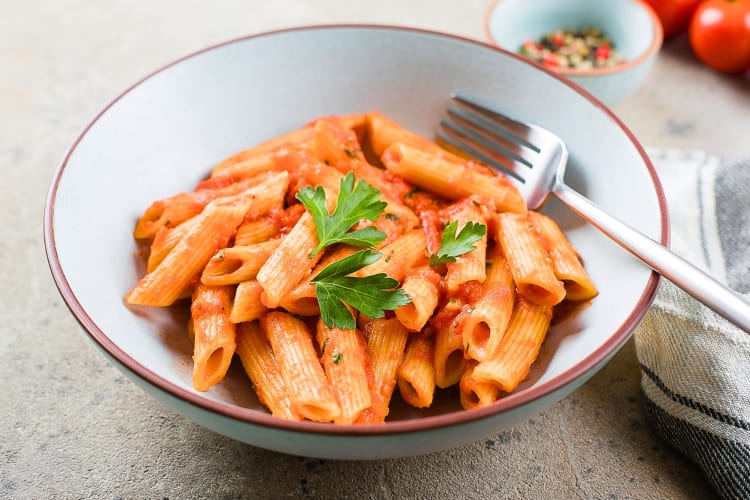
How To Defrost Frozen Tomatoes
To defrost tomatoes, remove the portion you’ll need from the freezer and allow the tomatoes to sit on the countertop for a few hours or in the refrigerator overnight. If time is of the essence, you can also use the defrost setting on your microwave; just keep an eye on the tomatoes so they don’t start cooking.
Another option is to place the freezer bag or container in a larger dish that has been filled with warm water; this will slightly speed up the thawing process. As discussed, you can also let the tomatoes defrost just enough to loosen them from the container and add them directly to a dish on the stove where they can finish thawing.
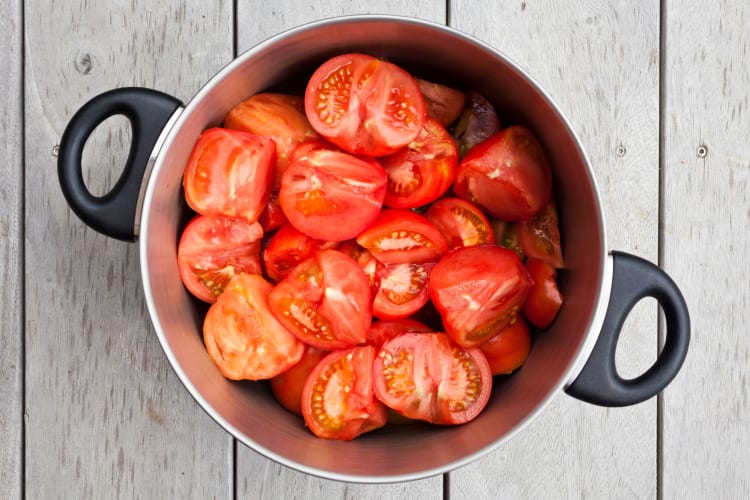
We hope this guide to freezing tomatoes has helped you better understand the best methods for preserving your tomatoes. Whether you have a bumper crop from your garden or some extra pasta sauce, you’ll now know how to freeze all your leftover tomato products for later use, reducing both food waste and your grocery bill.
For even more ways to explore your favorite foods, check out other experiences happening on Cozymeal.



FOOD FOR THOUGHT?
Join the conversation.